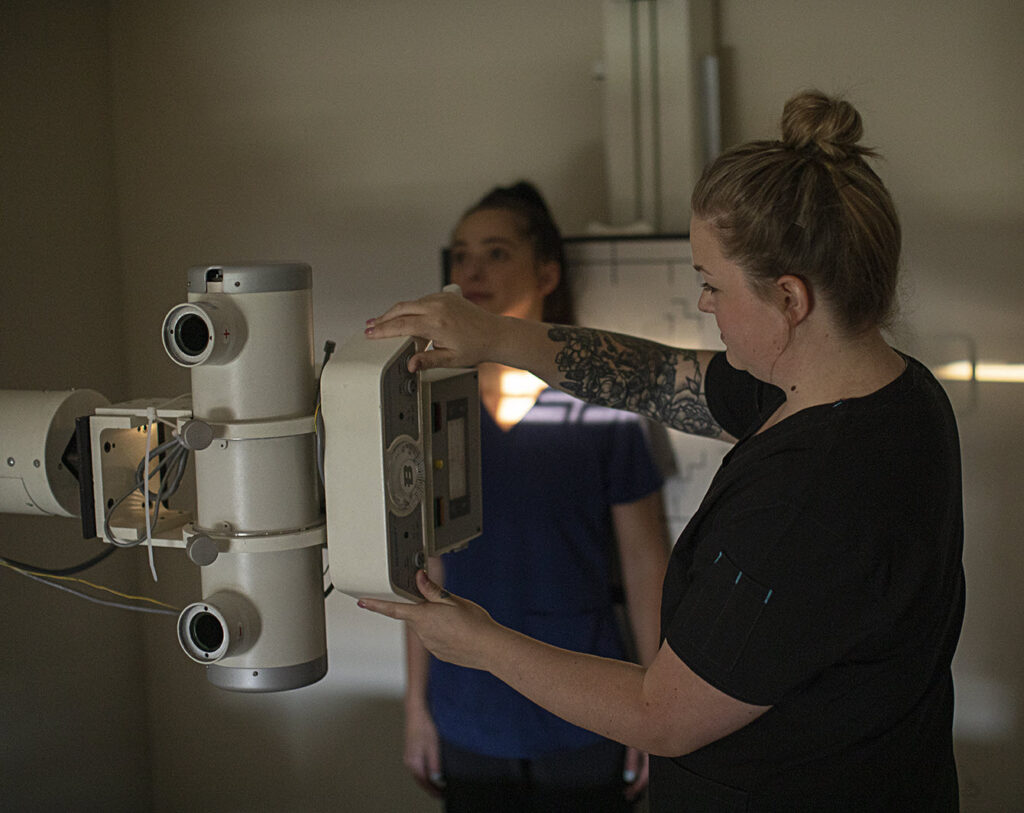
Helping People with High-Tech Healthcare: Five Advantages to Being a Radiologic Technologist
Radiologic technologists, also called “rad techs” or “x-ray techs,” are crucial healthcare professionals who perform medical imaging examinations. Every day you get to help people and use cutting-edge medical technology. That can be a great combination.
I’ve been a radiologic technologist myself as well as an instructor in this field, and I know firsthand the satisfaction that this career path can bring.
In the following, I’ll discuss five reasons to consider being a radiologic technologist.
1. Become a highly valued healthcare professional in two years
If you’re interested in a healthcare career but have concerns about the time and expense your education would take, radiologic technology could be a great option for you.
Becoming a radiologic technologist generally requires attaining a two-year associate degree. In other words, you could be working full-time as a valued healthcare professional — and earning a good salary — in as few as two years.
(See How to Become a Radiologic Technologist for more information.)
2. Experience the rewards of helping people on a daily basis
Some people find medical examinations stressful. As a radiologic technologist, your warm, friendly demeanor can help patients feel more calm and comfortable. This also helps create trust and can go a long way toward creating a positive experience for patients.
In fact, as you interact one-on-one with your patients, you have lots of opportunities to make a difference in their experience by doing things such as:
- Gently and carefully positioning their body
- Directing them through procedures in a clear and calm manner
- Addressing questions and concerns in a compassionate, thoughtful way
- Protecting them from unnecessary radiation through specific radiation protection protocols
In addition, you may also be talking with family members of patients.
3. Work with advanced medical technology
Are you a hands-on kind of person? Radiologic technologists perform medical imaging examinations like the following using sophisticated equipment and technology:
- X-ray (also known as radiography)
- Computed tomography (CT)
- Magnetic resonance imaging (MRI)
- Mammography
- Interventional radiology
The resulting imagery — of tissues, organs, bones, or blood vessels — helps physicians diagnose and treat illnesses and diseases.
On top of that, medical imaging technology is continually advancing. You’ll get to learn about, and experience firsthand, the exciting ways that your profession is helping to improve patient care.
4. Enjoy the benefits of a profession needed widely
If you want a profession that doesn’t limit you geographically, radiologic technology could be an excellent fit. Radiologic technologists are typically needed wherever healthcare is offered — from small towns to suburban areas to big cities.
Also, radiologic technologists generally must pass a national registration exam (see No. 5 for more info). That’s good news because it means the credentials you’ve worked so hard to earn are valid in all 50 states. (In fact, it’s even possible that your education and registration can help you secure employment beyond the U.S., if desired.)
Then there’s the question of your work environment. Because radiologic technologists are needed in so many facets of healthcare, you’ll have more opportunity to be selective about the setting you work in. Here are just some examples of where radiologic technologists are employed:
- Primary care medical offices and clinics
- Specialty clinics
- Outpatient imaging centers
- Hospitals
- ERs
- Trauma centers (within ERs)
- Chiropractic clinics
5. Choose a professional path with plenty of opportunities for career development
Radiologic technologists have many ways to advance their career and create more professional opportunities. Graduating from a radiologic technology program generally makes you eligible to sit for The American Registry of Radiologic Technologists’ (ARRT) radiography exam.
Passing that exam means you become a registered radiologic technologist certified in radiography — the most common way people enter the profession. That also opens the door to acquiring more registrations in the future, which can:
- Help you become a more competitive job candidate
- Allow you more options to specialize
- Give you more control over the kind of environment you work in (see also No. 4 above)
Note that these additional registrations do not require completing more programs or acquiring more degrees. Instead, you’ll need to 1) complete continuing education units (CEUs), often available through online courses, and 2) demonstrate competency by performing the procedures under supervision in a professional setting.
You can also can take your radiologic technologist background in related career directions like these:
- Radiography equipment training
- Medical sales
- Healthcare management (which would typically require a minimum of a bachelor’s degree)
Take the next step and start exploring programs
Helping people, working with cutting-edge technology, enjoying a flexible career path — those are just a few highlights of being a radiologic technologist. Plus, you could join the profession in around two years.
If what you’ve learned above sounds appealing, I strongly suggest you take the next step: Start exploring radiologic technology schools today!
Heather Schepman, MS, R.T. (R), is an experienced radiologic technologist who is also the Radiography Program Chair at Northwestern Health Sciences University.
